“God, grant me the serenity to accept the things I cannot change, the courage to change the things I can, and the wisdom to know the difference.”
– Reinhold Niebuhr
Category: Learn
Atomic Habits: An Easy & Proven Way to Build Good Habits & Break Bad Ones
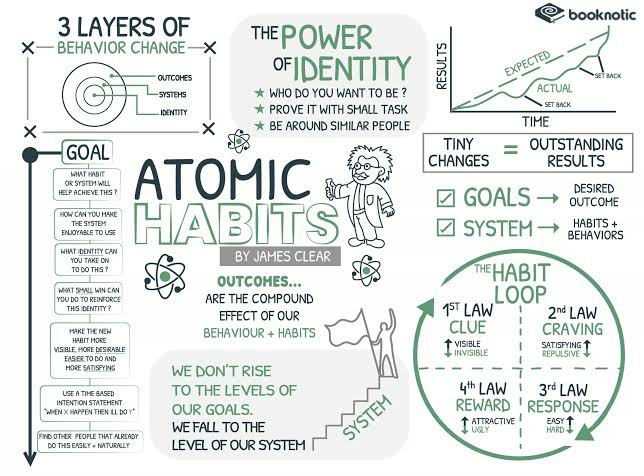
“Your outcomes are a lagging measure of your habits. Your net worth is a lagging measure of your financial habits. Your weight is a lagging measure of your eating habits. Your knowledge is a lagging measure of your learning habits. You get what you repeat.”
Atomic Habits , a breakthrough book from James Clear is the most comprehensive guide on how to change your habits and get better every day. This short note based on the book, is written in two parts. Part one helps us understand the importance of our habits and why they matter. More importantly, it provides answers to a series of “How to” questions that naturally occur in the context of building good habits and breaking the bad ones. In the second part of the note, six important ideas, concepts and principles are summarised that will help the reader in building habits that he or she desires to.
Part One – What ? Why ? How ?
– What is a Habit ?
– Why do Habits Matter ?
– How Habits Work ?
– How To Start A New Habit?
– How to Build Better Habits ?
– How to Break Bad Habits ?
– How to Enjoy Habits that are Hard ?
What is a Habit ?
“Habits + Deliberate Practice = Mastery”
Habits are mental shortcuts. A habit is a routine or behavior that is carried out repeatedly and most of the time automatically. When you are faced with a problem repeatedly, your brain starts to automate the process of solving it. Your habits are sets of automatic solutions that solve the problems you come across regularly.The ultimate purpose of habits is to solve the problems of life with as little energy and effort as possible. A habit is a behavior that has been repeated enough times to become automatic.
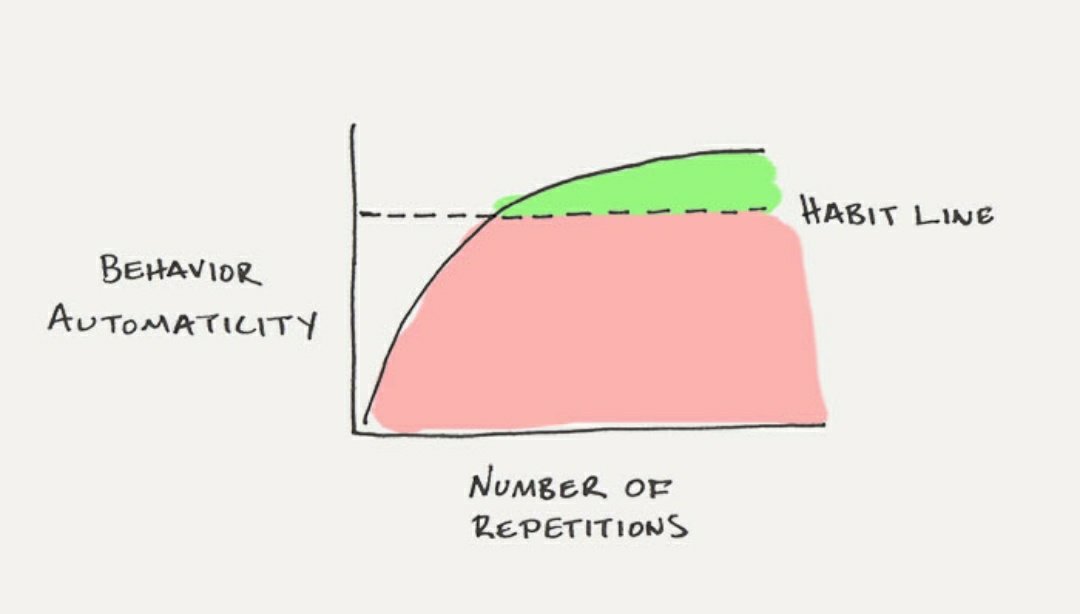
If you find yourself struggling to build a good habit or break a bad one, it is not because you have lost your ability to improve. It is often because you have not yet crossed what James Clear calls, Plateau of Latent Potential. When you finally break through the Plateau of Latent Potential, people will call it an overnight success. Habits are the compound interest of self-improvement.
The upside of habits is that we can do things without thinking. The downside is that we stop paying attention to little errors. Reflection and review is a process that allows you to remain conscious of your performance over time. The tighter we cling to an identity, the harder it becomes to grow beyond it.
Why do Habits Matter ?
IDENTITY -> PROCESSES -> OUTCOMES
Habits shape our identity. Our actions define who we are. Our habits are a reflection of our identity. The more we repeat a behavior, the more we reinforce the identity associated with that behavior. For example: if you make your bed every day, you are reinforcing the identity of someone who is organized and tidy.
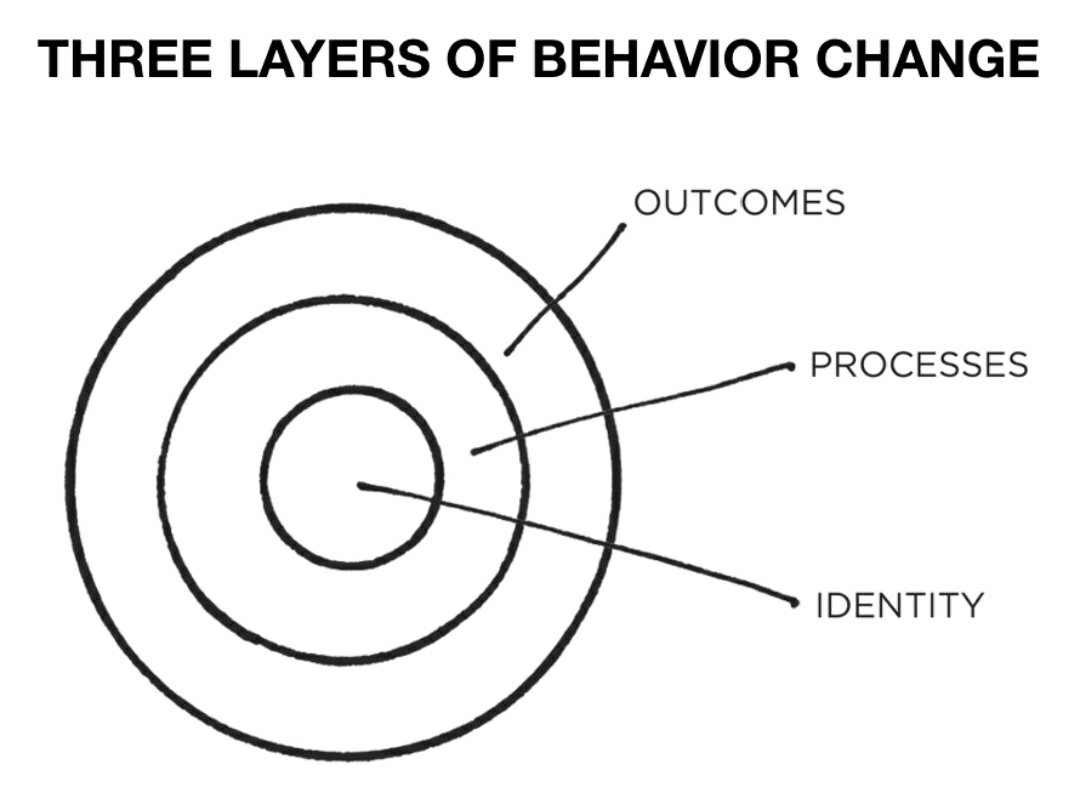
There are three layers of behavior change:
1. Change in your outcomes. This means changing your results, for example, losing weight.
2. Change in your processes. This means changing your habits and systems: for example, developing a daily exercise routine and diet.
3. Change in your identity. This means changing your beliefs: the way you see yourself and the ones around you. For example, if you exercise regularly, you are reinforcing the identity of someone who is fit and healthy.
With outcome-based habits, the focus is on what you want to achieve. With identity-based habits, the focus is on who you wish to become. James Clear argues that the best way to change our identity is to focus on changing our habits. By starting with small, easy habits, we can gradually build up a new identity that is more aligned with our goals. True behavior change is identity change. You could choose and start a habit because of motivation, but you’ll stick with it only if it becomes part of your identity. The real reason habits matter is not because they can get you better results (although they can do that), but because they can change your beliefs about yourself.
How Habits Work ?
CUE -> CRAVING -> RESPONSE -> REWARD
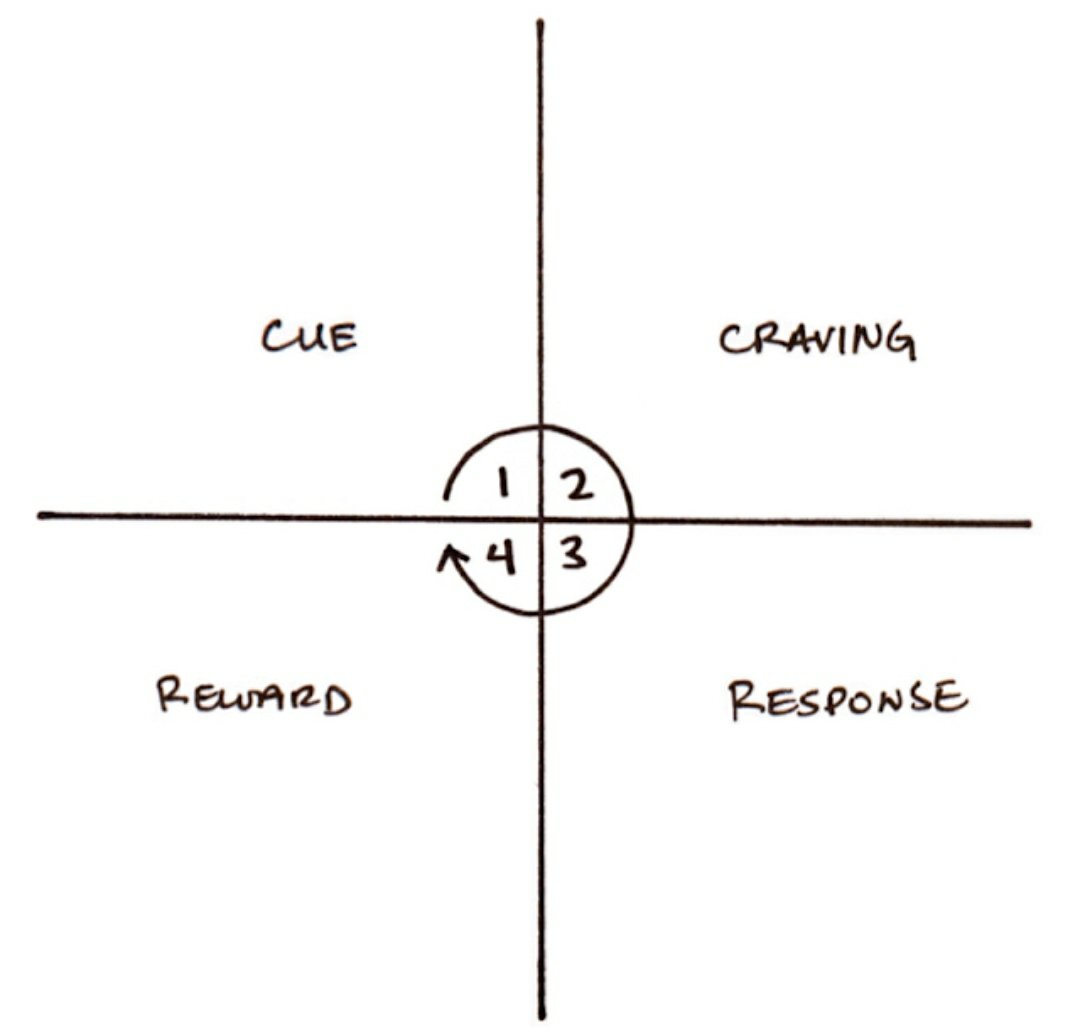
The main components of habit formation are:
1. Cue: It causes your brain to begin a behavior. It is a bit of information that predicts a reward.
2. Craving: It is the motivation behind every habit. Without a desire, we don’t have a reason to act.
3. Response: This is the very habit you perform; it can take the form of a thought or an action.
4. Reward: The end goal of every habit.
Habit formation is the process by which a behavior becomes progressively more automatic through repetition. The amount of time you have been performing a habit is not as important as the number of times you have performed it.You could do something three times in thirty days, or three hundred times. The frequency will always make the difference.
Habits are attractive when we associate them with positive feelings and unattractive when we associate them with negative feelings.
How To Start A New Habit?
‘After [CURRENT HABIT], I will [NEW HABIT].
One of the best ways to build a new habit is to identify a current habit you already do each day and then stack your new behavior on top. This is called habit stacking. The two most common cues are time and location. Creating an implementation intention is a strategy you can use to pair a new habit with a specific time and location. Habit stacking is a strategy you can use to pair a new habit with a current habit.
The habit stacking formula is: ‘After [CURRENT HABIT], I will [NEW HABIT].
Using the Environment to Build New Habits.
Environment is the invisible hand that shapes human behavior. Small changes in context can lead to large changes in behavior over time. Every habit is initiated by a cue. We are more likely to notice cues that stand out. Make the cues of good habits obvious in your environment. Gradually, your habits become associated not with a single trigger but with the entire context surrounding the behavior. The context becomes the cue. It is easier to build new habits in a new environment because you are not fighting against old cue
How to Build Better Habits ?
A habit needs to be enjoyable for it to last. What is instantly rewarded is done again. what instantly punished is ditched. To get a habit to stick You need to feel instantly successful, even if in a small way. The Four Laws of Behavior Change are a simple set of rules we can use to build better habits. For example, If we wish to build a habit of a daily work out, here’s how we can apply this 4 point formula.
1. Make it obvious
Put your gym bag by the door so you see it first thing in the morning.
2. Make it attractive
Listen to your favorite music while you work out.
3. Make it easy
Start your day with a 10-minute walk.
4. Make it satisfying
Write down your progress in a habit tracker.
How to Break Bad Habits ?
Self-control is a short-term strategy when forming habits. You may be able to resist temptation once, but you will most likely not be able to have the willpower to control your desires each time they appear. A better method is to cut bad habits off at the source. For example, if some want’s to get out of the habit of smoking, here’s how he can apply this 4 point formula.
1. Make it invisible.
Hide your cigarettes so you don’t see them every time.
2. Make it unappealing.
Think about how bad your breath smells after you smoking.
3. Make it hard to perform.
Set a goal to work for 25 minutes, even if you don’t feel like it.
4. Make it frustrating.
Remember how bad slacking off feels.
How to Enjoy Habits that are Hard ?
Create a motivation ritual by doing something you really like right before a difficult habit.
Part Two – Ideas, Concepts, Principles
– 1% Improvement Everyday
– The 2-Minute Rule
– The Goldilocks Rule for Staying Motivated
– The Law Of Least Effort
– Walk Slowly, But Never Backward
– Focus on Systems
1% Improvement Everyday
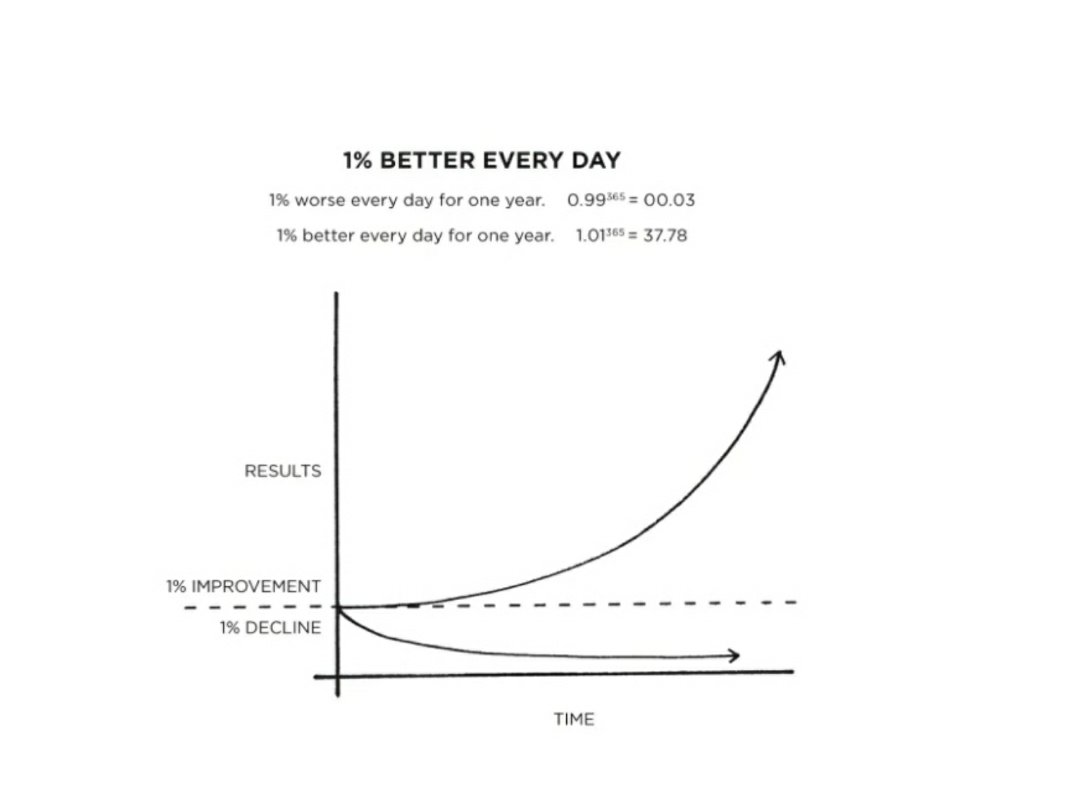
“If you can get 1 % better each day you will end up 37 times better by the time you’re done.
If you get worst 1% every single day end up reaching nearly 0″ – JAMES CLEAR
Getting 1 percent better every day counts for a lot in the long-run. It is about the cycle of endless refinement and continuous improvement. Habits are the compound interest of self-improvement.
The 2-Minute Rule
If you can do an action in two minutes or less, tackle it at the moment — and don’t delay.
The rule was created by David Allen in Getting Things Done & James Clear recommends it for habit building as well: When you start a new habit it should take less than two minutes to do.
Any habit can be scaled down into a 2-minute version:
• Read before bed each night becomes read one page;
• 30 minutes of exercise becomes take out my yoga mat;
• Fold the laundry becomes fold one pair of socks.
The Goldilocks Rule for Staying Motivated
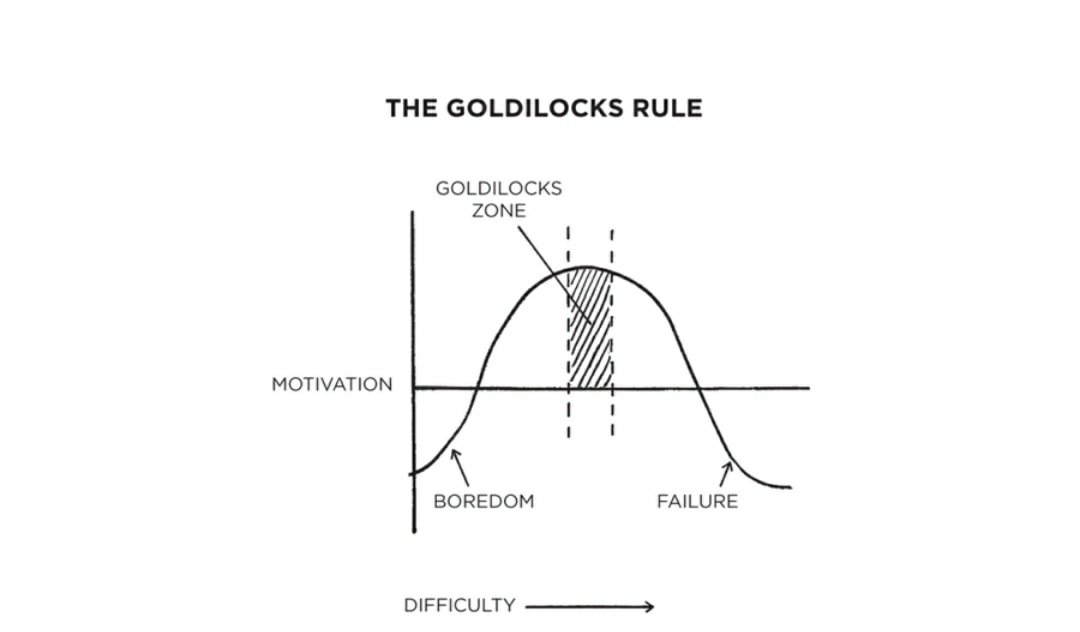
We experience peak motivation when we are performing actions that are right on the edge our current abilities. Not too difficult, not too easy.
The Law Of Least Effort
We will instinctively choose the path that requires least amount of work. This is a universal law that has huge implications in habit formation:
• Create an environment where doing the right thing is as easy as possible.
• Reduce the friction associated with good behaviors. When friction is low, habits are easy.
• Increase the friction associated with bad behaviors. When friction is high, habits are difficult.
Walk Slowly, But Never Backward
It’s easy to get discouraged when you’re trying to change your habits, especially if you don’t see results immediately. But if you keep taking small steps forward, even if they’re not huge, you’ll eventually reach your goals.
For example: if you’re trying to lose weight, you might be tempted to skip a workout or eat a unhealthy meal. But if you do that, you’ll be setting yourself back. It’s better to make small, healthy choices that will help you reach your goals in the long run.
Focus on Systems
Goals are good for establishing a direction, but systems are best for making progress. Goals are about the results you hope to reach. Systems are about the mechanisms that lead to those results.
To conclude, let’s accept that on an average 90% of our daily decisions happen automatically, many shaped by our environment. Thus, most decisions are a habit, not a deliberate choice. Therefore, to make smarter choices, we need to design smarter defaults. And so, habits can be developed by shaping the invisible defaults of life.
The Animal that Became God
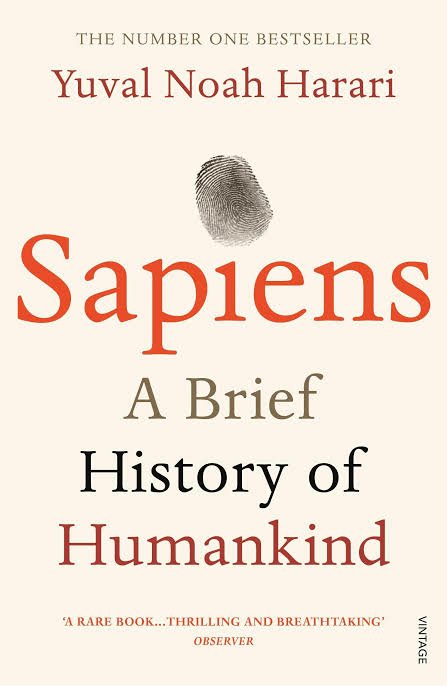
“Fire gave us power
Farming made us hungry for more
Money gave us purpose
Science made us deadly”
– YUVAL NOAH HARARI
This evening, during a stroll with Purvi, I expressed my concerns about the complexity and challenges of the modern day life. Her response was that we need to adapt. But then, humans have always adapted and not just that, they have transformed almost everything that they have been able to.
It was by chance later in the night that I happened to pick up the book Sapiens, by Yuval Noah Harari, and read a summary of the book. This book let’s you dive into depths of humans, from the begining, to how things stand today. It echoes and explains why the modern day life has become complex. The following explaination from the book, sums up how the complexity has grown with the passage of time.
Seventy Thousand yeas ago, homosapiens were still an insignificant animal minding their own business in a corner of Africa.
In the following millennia, they transformed themselves into the masters of the entire planet and the terror of the ecosystem.
Today they stand on the verge of becoming God, poised to acquire not only eternal youth, but also the divine abilities of creation and destruction.
There are more thought provoking facts that are well explained and articulated in the book. In my future posts, I shall make a attempt to share my thoughts along with the author’s narratives. I hope, I can find my answer, and a solution.
The Success Mantra – Distilled From My All Time Favourite Book Reads
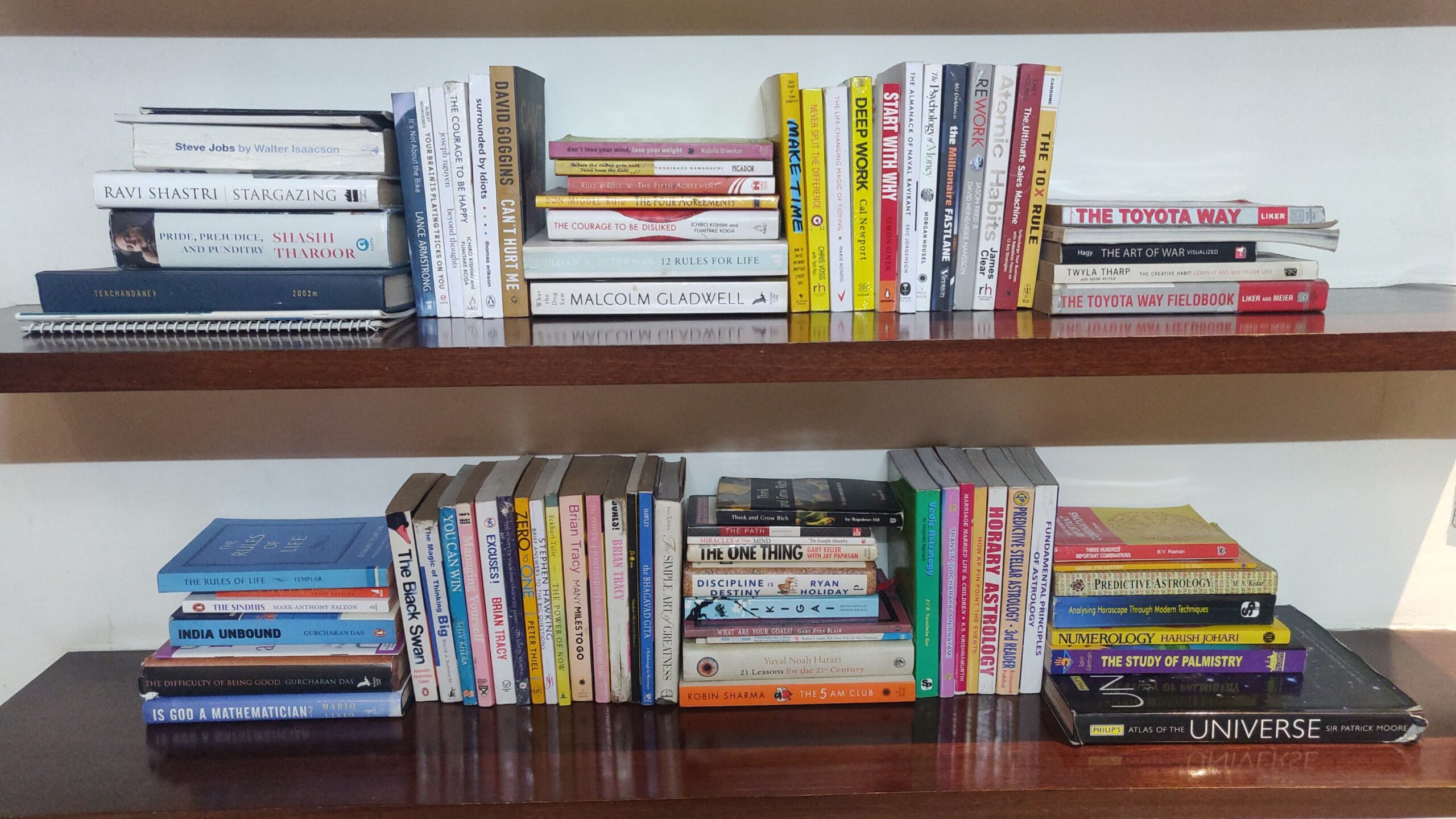
“Whatever you vividly imagine, ardently desire, sincerely believe and enthusiastically act up on must inevitably come to pass.” -Paul Meyer
The Success Mantra is a collection of time tested and proven principles, that I have attempted to summarise in this note, from some of my all time favourite books.
The following is a short brief on the 10 valuable Mantras of Success
1. Definiteness of Purpose
2. Mastering Self-Discipline
3. Positive Mental Attitude
4. Learning from Failure
5. Effective Communication
6. Building a Mastermind Group
7. Taking Action
8. Persistence and Determination
9. Continuous Learning and Growth
10. Giving Back and Serving Others
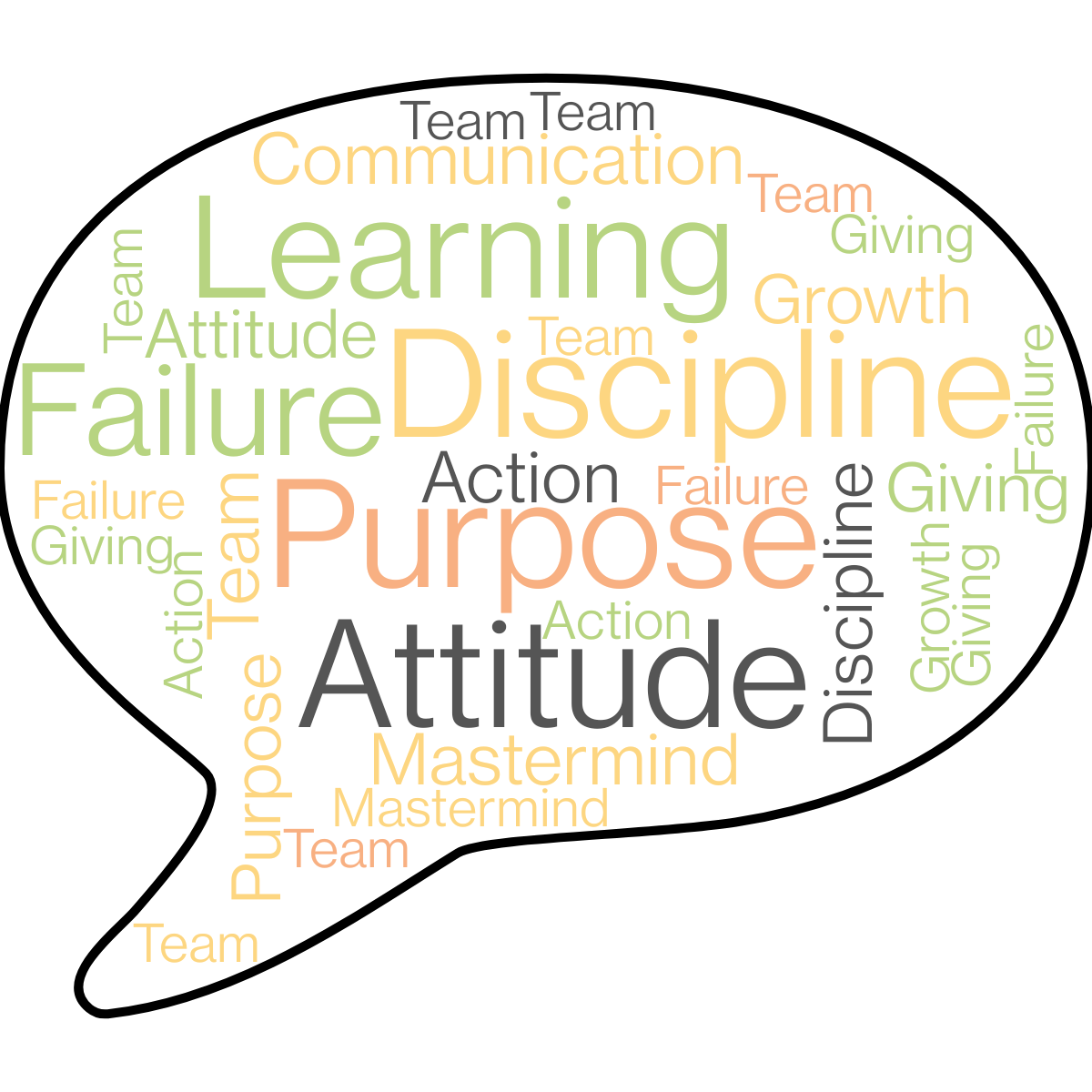
Applying these principles can help everyone unlock their true potential and achieve success in various facets of life.
1. Definiteness of Purpose:
The secret of success is constancy to purpose. – Benjamin Disraeli
Success begins with a clear and specific goal. Define your purpose and create a plan to achieve it. Without a definite purpose, you may drift aimlessly and struggle to find success.
2. Mastering Self-Discipline:
Discipline is Destiny. – Ryan Holiday
Self-discipline is crucial for success. Develop the ability to control your thoughts, emotions, and actions. By mastering self-discipline, you can stay focused, overcome obstacles, and persist in the face of challenges.
3. Positive Mental Attitude:
Keep your face to the sunshine and you cannot see a shadow. – Helen Keller
Cultivate a positive mindset. Your thoughts and beliefs shape your reality. Maintain a positive mental attitude, visualize success, and eliminate negative self-talk. A positive mindset attracts opportunities and helps you overcome setbacks.
4. Learning from Failure:
I have not failed. I’ve just found 10,000 ways that won’t work. – Thomas A. Edison
Failure is not permanent unless you allow it to be. Embrace failure as a learning opportunity and stepping stone to success. Analyze your failures, learn from them, and adjust your approach. Persistence and resilience are key to achieving your goals.
5. Effective Communication:
Communication – the human connection – is the key to personal and career success. – Paul J. Meyer
Develop strong communication skills. Learn to express yourself clearly, listen actively, and understand others. Effective communication builds relationships, inspires collaboration, and opens doors to new opportunities.
6. Building a Mastermind Group:
When a group of intelligent men work in the spirit of Harmony, they will provide much more thought energy than a that of one intelligent man. – Napoleon Hill
Surround yourself with like-minded individuals who support and challenge you. Create a mastermind group of individuals who share similar goals and values. Collaborate, exchange ideas, and leverage collective knowledge and resources.
7. Taking Action:
A dream becomes a goal when action is taken toward its achievement – Bo Bennett
Success requires taking consistent and purposeful action. Avoid procrastination and indecision. Break down your goals into actionable steps and take immediate action. Progress comes from consistent effort and perseverance.
8. Persistence and Determination:
The most essential factor is persistence – the determination never to allow your energy or enthusiasm to be dampened by the discouragement that must inevitably come. – James Whitcomb Riley
Success rarely comes overnight. Develop persistence and determination to overcome obstacles and setbacks. Stay committed to your goals, even when faced with challenges. Success often comes to those who refuse to give up.
9. Continuous Learning and Growth:
Successful men, never stop acquiring specialized knowledge related to their major purpose, business, or profession. – Napoleon Hill
Commit to lifelong learning and personal growth. Acquire new knowledge, develop new skills, and stay updated with industry trends. Embrace a growth mindset and seek opportunities for self-improvement.
10. Giving Back and Serving Others:
When you’re in a position to have gotten so much, the gift at this point is giving back. – Paul Stanley
True success involves making a positive impact on others. Find ways to contribute to society and help others succeed. By serving others, you create a ripple effect of positivity and attract success into your own life.
Man’s Search For Meaning
“If you have a why to live, you can bear almost any how.”
– FRIEDRICH NIETZSCHE
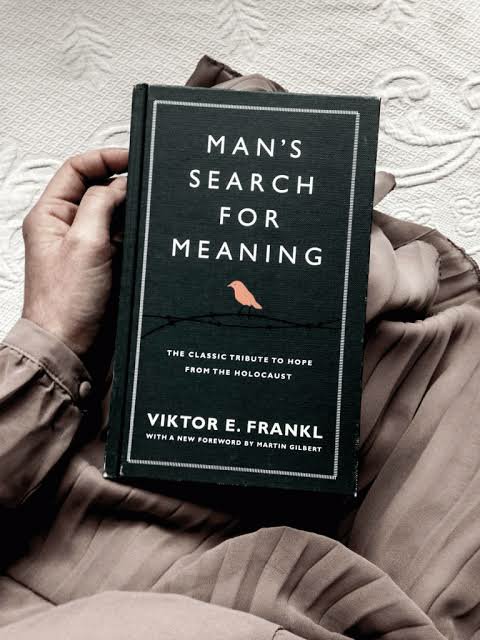
“Everything can be taken from a man but one thing: the last of the human freedoms – to choose one’s attitude in any given set of circumstances, to choose one’s own way.” – Viktor E. Frankl
Meaning of Life
“The meaning of life is to give life meaning.”
-
The first being a higher purpose or calling, something you feel you have been put on this earth to achieve.
-
The second is love, love for your partner, spouse, children, family, friends, and all those who matter.
-
The last is suffering. Suffering is an unavoidable part of human existence and it is upto man to find meaning in his own suffering.
1. Pursue a Life Task
“Everyone has his own specific vocation or mission in life; everyone must carry out a concrete assignment that demands fulfillment. Therein he cannot be replaced, nor can his life be repeated. Thus, everyone’s task is unique as his specific opportunity to implement it.”
2. Love
“The more one forgets himself—by giving himself to another person to love—the more human he is and the more he actualizes himself.”
3. Suffer Bravely
“(By) accepting the challenge to suffer bravely, life has a meaning up to the last moment, and it retains this meaning literally to the end.”
“Life is Now – The Meaning of Life is in this Moment.” – Jayesh Tekchandaney
Logotherapy
“When we are unable to change a situation, we are challenged to change ourselves.”
Good Work Brings Goodwill & Growth, Greed Results in Disgrace & Downfall

Building Trust
“Building trust requires nothing more than telling the truth. That’s it. No complicated formula.”
Attitude
How you do anything is how you do everything.
– Simon Sinek
IKIGAI
Ikigai’ is a book authored by Hector Garcia and Francesc Miralles. The purpose of this book is to help you find your Ikigai, and to share insights from Japanese philosophy on the lasting health of body, mind and spirit.
In this note, we summarise the key ideas and actions presented in the book. These include :
– What is Ikigai ?
– Knowing Your Ikigai
– Ikigai and Longevity
– Antiaging Secrets
– How to Face Life’s Challenges
– Summarised – The 10 Rules of Ikigai
What is Ikigai ?
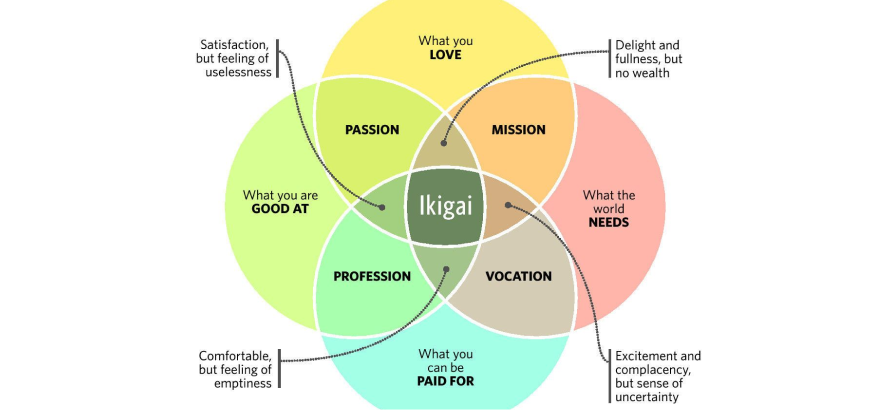
Ikigai is the reason for your being. ‘Iki’ in Japanese means ‘life,’ and ‘gai’ describes value or worth. Ikigai means your purpose in life, which makes you wake up everyday. Having a clearly defined ikigai brings satisfaction, happiness, and meaning to our lives.
Ikigai is illustrated in four overlapping circles, as in a Venn Diagram which talks about a synthesis of:
• What you love to do.
• What you are good at.
• What the world needs.
• What you can be paid for
Knowing Your Ikigai
• Your values
• Things you like to do
• Things you are good at
The cross-section or overlap of these three lists, is your Ikigai, something you should do for the rest of your life.
Happiness is in the act of doing, not the result.
The concept of Ikigai aligns with everyday life, as opposed to a lifetime. It makes us appreciate our daily life, celebrating it, and experiencing the small joys of living. Ikigai is the reason you wake up in the morning for, that thing you live for, daily. Whatever you do, don’t retire. Keep your heart young. Smile. Live an unhurried life. Show respect for nature.
The here and now, and the impermanence of things: Both Buddhism and Stoicism remind us that the present is all that exists, and it is the only thing we can control. Instead of worrying about the past or the future, we should appreciate things just as they are in the moment, in the now.
Wabi-sabi and ichi-go ichi-e: Wabi-sabi is a Japanese concept that shows us the beauty of the fleeting, changeable, and imperfect nature of the world around us. Instead of searching for beauty in perfection, we should look for it in things that are flawed, incomplete. Japanese concept is that of ichi-go ichi-e , which could be translated “This moment exists only now and won’t come again.” It is heard most often in social gatherings as a reminder that each encounter is unique and will never be repeated, meaning that we should enjoy the moment and not lose ourselves in worries about the past or the future.
1. Stay active; don’t retire.
2. Take it slow.
3. Don’t fill your stomach.
4. Surround yourself with good friends.
5. Get in shape for your next birthday.
6. Smile.
7. Reconnect with nature.
8. Give thanks.
9. Live in the moment.
10. Follow your IKIGAI.
Start with Why
“Those who have a ‘why’ to live, can bear with almost any ‘how’.”
– VIKTOR E. FRANKL
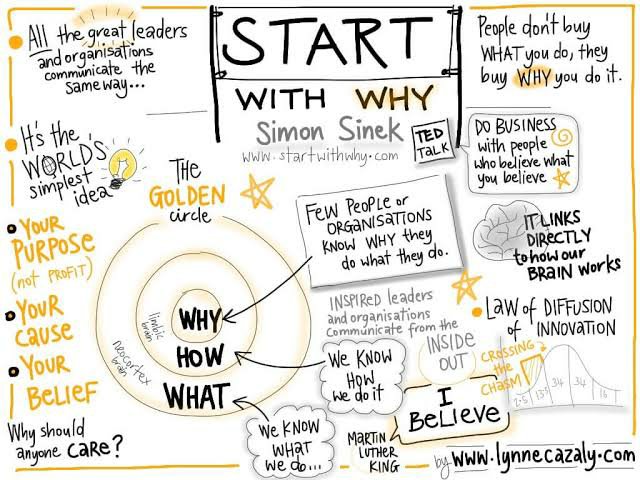
In “Start With Why,” the author, Simon Sinek presents that purpose-driven individuals and organisations succeed because they start with the “why” instead of the “what” or the “how.”
1. WHY is the purpose, cause, or belief.
2. Every inspiring leader starts with WHY
3. People don’t buy WHAT you do, they buy WHY you do it.
4. Knowing your WHY is the key to lasting success.
Sinek provides a framework for finding your “Why” and communicating it to your team and customers. It is by putting into practice your personal values and beliefs, and using them as the foundation for your business strategy.
To support his theory, Sinek provides real-world examples of companies that have successfully communicated their purpose to create a loyal following.
The Golden Circle
Sinek introduces and narrates a novel concept. He calls it, “The Golden Circle”.
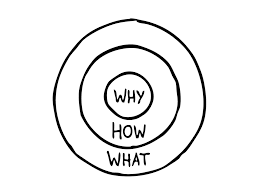
The Golden Circle is formed of three parts: ‘Why,’ ‘How’ and ‘What.’
What ?
The What of a company relates to the product or service that a company provides. The What is the outer layer of the circle.
How ?
The How of a company is the approach adopted by a company. The How is the differentiating value proposition or a unique selling point of the company.
Why ?
The Biological Basis of Golden Circle
Sinek explains that the ‘What ?’ is directly related to our neocortex in the brain. The neocortex is a an area in the human brain specialized for rational and analytical thoughts and language. The neocortex does not drive behavior. Instead, it only allows us to consider vast amounts of data.
The ‘How ?’ and ‘Why ?’ of The Golden Circle are both associated with the limbic brain, which is specialized for feelings like trust and loyalty. This area of the brain is responsible for all human behavior and decision-making.
Thus if you start with ‘Why ?’ you will be directly connecting with the limbic brain and this will facilitate better decision making.
“The role of a leader is not to come up with all the great ideas. The role of a leader is to create an environment in which great ideas can happen.”
Video
Watch Simon Sinek, explaining ‘Start with Why’